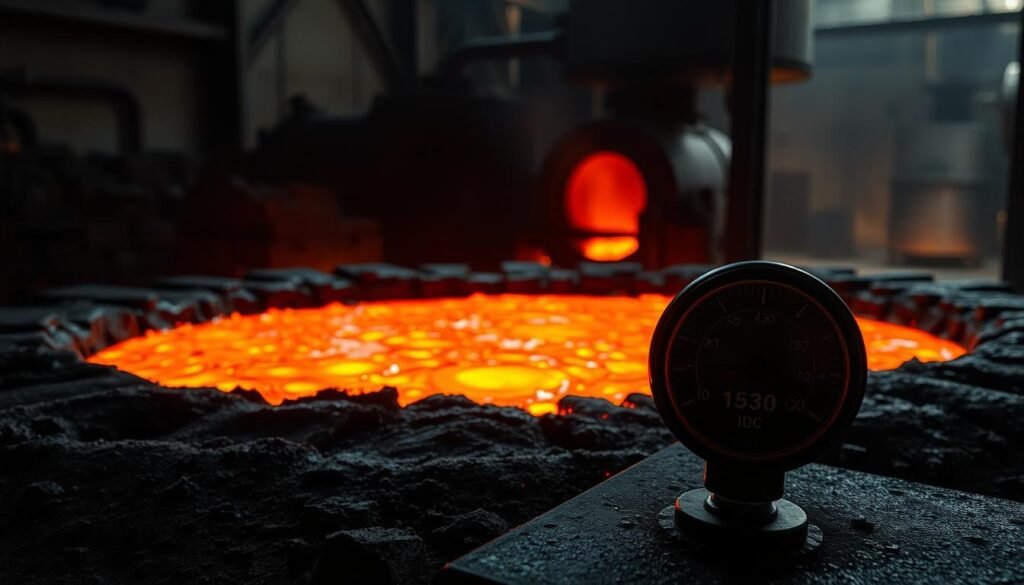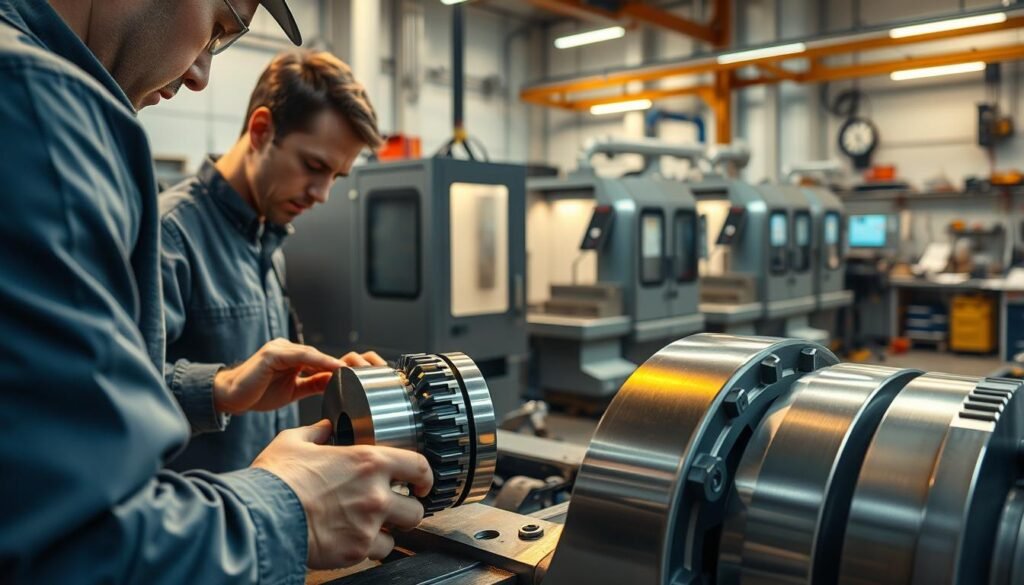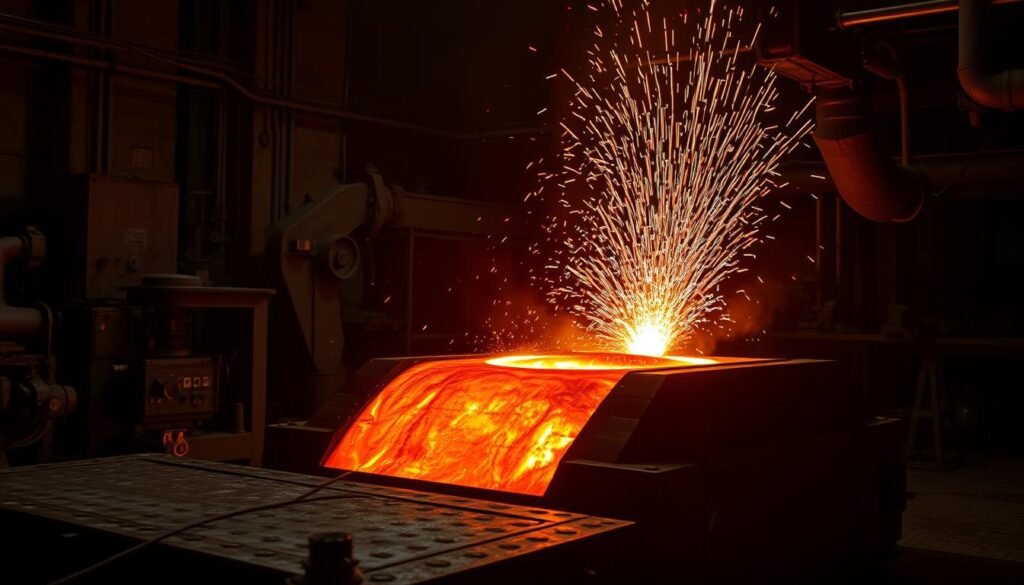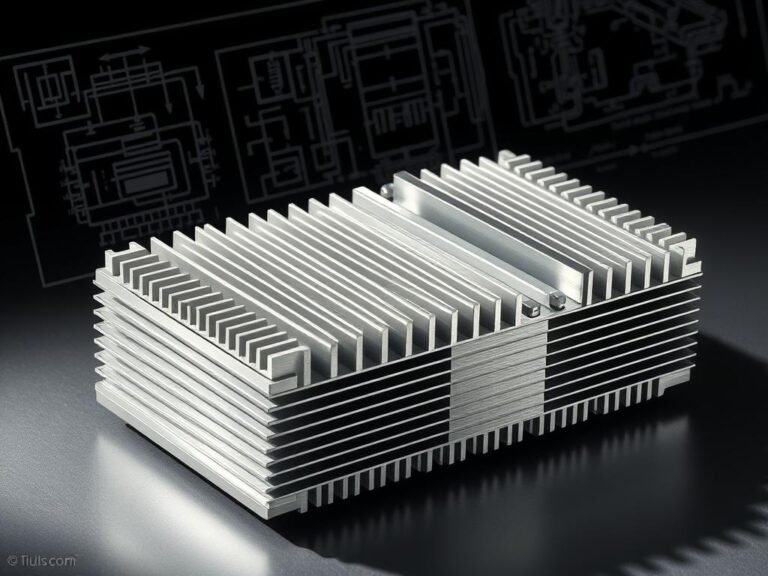The Iron melting point is very important. It determines how resistant and stable iron products are. The melting temperature of iron is crucial for manufacturing strong components.
A high metal melting point makes iron a key material in the industry. Its thermal properties enable the production of strong components. These components are used in many fields.
The iron melting point is important because it ensures the quality and reliability of components. This allows manufacturers to produce robust components that are strong.
1538 °C: Iron's strength
Iron melts at 1538 °C. This is a major advantage in the industry. It enables many applications where thermal resistance is important.
The melting point of iron is not only a physical property. It is also important for manufacturing. In steel production in the United States, iron is alloyed with other elements. This results in steels with special properties.
Role in manufacturing
In the United States foundry industry, the High-temperature resistance of iron is useful. It allows for the creation of complex shapes. Here is a table with manufacturing processes where iron's melting temperature is important:
| Manufacturing process | Description | Requirements for melting temperature |
|---|---|---|
| Steel production | Alloying iron with other elements | High |
| Foundry | Molding iron into complex structures | High |
| Welding technology | Joining iron components | Middle |

To melt iron, a lot of energy is needed. Modern technologies like induction furnaces make the process more efficient. They reduce energy costs and make processing more environmentally friendly.
Material behavior
Iron behaves complexly at high temperatures. It oxidizes and its hardness changes. These changes are important for the use of iron in industry.
Iron tends to react with oxygen at high temperatures. It then forms iron oxide. This can degrade material properties.
Oxidation at high temperatures
The oxidation of iron at high temperatures is an important factor.
- It affects the durability and functionality of iron components.
- To control this, various protective measures are applied.
- Application of protective coatings to shield the iron from direct contact with oxygen.
Use of alloys that exhibit higher oxidation resistance. Controlled atmospheres where the oxygen content is minimized. These measures improve the
temperature resistance
of iron. They extend its service life. Hardness properties The hardness can be specifically altered. This makes iron suitable for specific applications.
A suitable heat treatment changes the microstructure of iron. This increases its material hardness. This is important when iron is subjected to high mechanical stresses.
| Heat treatment process | Effect on material hardness |
|---|---|
| Annealing | Increase in ductility |
| Hardening | Increase in hardness |
| Start-up | Reduction of brittleness |
Targeted control of hardness properties through heat treatment optimizes steel for many applications. From construction structures to heavy machinery.
Manufacturing tips
Processing steel and its alloys requires specialized knowledge. It is important to select the right alloy and apply suitable machining methods. This achieves the best results.
Steel alloys are very useful because of their versatility and strength. Additions like carbon, chromium, or nickel can customize the properties of steel. This makes it ideal for specific tasks.
Alloys with steel
Alloying elements significantly improve the properties of steel. Carbon makes it harder and more rigid. Chromium increases corrosion resistance.
“The right alloy for the right application is crucial for the success of a project,” says an expert from the metallurgy industry.
- Carbon steel for high strength and hardness
- Stainless steel for corrosion resistance
- Alloyed steel for special properties
Precision machining
There are many techniques in precision machining of iron alloys. These include CNC machining, laser cutting, and traditional methods such as forging and casting. Each technique has its strengths and is better suited for certain tasks.

The choice of the right method depends on precision, complexity, and surface finish.
Modern techniques enable precise and efficient processing. By combining traditional knowledge and modern methods, manufacturers achieve high quality and precision.
Applications
Iron and its alloys are very important in many industries. They are ideal because of their high melting point and robustness. For example, steel structures like skyscrapers and bridges are built that are safe and stable.
Steel structures in construction
Iron is often used in the construction industry because of its strength and durability. Steel structures can carry heavy loads and withstand environmental influences well.
Use in industrial machinery
Industrial machines and vehicles use iron components that withstand heat and pressure. Iron is also popular in industry because of its cost-effectiveness.
Economic aspects of iron use
Iron is economically advantageous in the long term. It has low acquisition costs and a long lifespan. Additionally, it is easy to recycle, making iron very economical.


